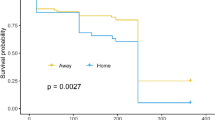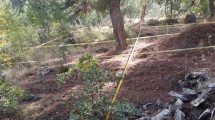Abstract
Large scale harvest of Korean pine (Pinus koraiensis) seeds as a food product in the mixed Korean pine-hardwood forest of northeastern China poses a serious threat to the sustainability and restoration of this endangered regional ecosystem. Seed collection over past decades greatly reduced the seed bank and subsequent seedling and sapling recruitment, and impacting a wide array of granivorous animals that rely on the pine seeds. We surveyed Korean pine seeds, including solid seeds (SS), insect consumed seeds (ICS) and other (animal) consumed (OCS) kernels, of the seed bank (forest floor and the top 10 cm of mineral soil), the seedlings and saplings from 1 m2 sample plots in five forest types in Liangshui Nature Reserve (LNR) of the southern Xiao Xing’an Mountains in northeastern China to provide accurate information for assessing the Korean pine regeneration potential. The average number of pine seeds in the seed bank were 11.2 seeds/m2, 9.1 seeds/m2, 4.6 seeds/m2, 1.1 seeds/m2, and 0.2 seeds/m2 in Korean pine-basswood forest, mixed Korean pine-hardwood forest, mixed conifer-hardwood forest, white birch forests, and oak forests, respectively. In the first three forest types, percentages of SS (potentially viable seeds) were 11.2%, 3.5% and 27.8%, respectively. The percentages of ICS (not viable seeds) were consistent at around 35%. The higher but variable percentages of OCS (not viable seeds) indicated high seed predation in these forests. Compared with other studies, we recorded higher percentages of seed damage, probably due to our survey approach and the increased depth of seed bank sampled in our study. Depletion of pine seeds in the seed bank greatly reduced seedling and sapling recruitment. Densities of pine seedlings varied from about 180 trees/ha in the mixed Korean pine-hardwood forest to about 5,400 trees/ha in the mixed conifer-hardwood forests and showed a high degree of spatial variation. Saplings were rare in the mixed Korean pine-hardwood forest, but ranged in the thousands in other forests. Large scale pine seed harvest has seriously threatened the sustainability of the mixed Korean pine-hardwood forest ecosystem. Scaling down the seed harvest or supplemental planting of pine saplings are urgently needed to maintain the health of the existing Korean pine forests and to restore this endangered ecosystem.
Similar content being viewed by others
References
Baskin C, Baskin J. 2001. Seeds: ecology, biogeography, and evolution of dormancy and germination. Academic Press. San Diego. 667 pp.
Chou YL, Li JW. 1964. The characteristic and distribution pattern of the major vegetation types in eastern mountainous area of the Northeastern China. Acta Phytoecologica et Geobotanica Sinica, 2(2): 190–206. (in Chinese)
Christensen KM, Whitham TG, Balda RP. 1991. Discrimination among pinyon pine trees by Clark’s Nutcrackers: effects of cone crop size and cone characters. Oecologia, 86(3): 402–407.
Dovčiak M, Reich PB, Frelich LE. 2003. Seed rain, safe sites, competing vegetation, and soil resources spatially structure white pine regeneration and recruitment. Canadian Journal Forest Research, 33(10): 1892–1904.
Dunnett CW. 1980. Pairwise Multiple Comparisons in the Unequal Variance Case. Journal of the American Statistical Association, 75: 796–800.
Fletcher Q, Boutin S, Lane J, LaMontagne J, McAdam A, Krebs C, Humphries M. 2010. The functional response of a hoarding seed predator to mast seeding. Ecology, 91(9): 2673–2683.
Folgarait PJ, Sala OE. 2002. Granivory rates by rodents, insects, and birds at different microsites in the Patagonian steppe. Ecography, 25: 417–427.
He ZB, Zhao WZ, Liu H, Zhang ZH. 2010. Successional process of Picea crassifolia forest after logging disturbance in semiarid mountains: A case study in the Qilian Mountains, northwestern China. Forest Ecology and Management, 260(3): 396–402.
Hutchins H, Hutchins S, Liu B. 1996. The role of birds and mammals in Korean pine (Pinus koraiensis) regeneration dynamics. Oecologia, 107(1): 120–130.
Ji LZ, Liu ZG, Hao ZQ, Wang QL, Wang M. 2002. Effect of Cones Picking on broad-leaved Pinus koraiensis forest in Changbai mountain. Chinese Journal of Ecology, 21(3): 39–42. (in Chinese)
Jin GZ, Yang GY, Ma JZ, Li LJ, Xu ZG, Zhao X, Hong MJ. 2010. Effect of anthropogenic cone-picking on seed bank and seedling bank of korean Pine in the major forest types in Lesser Xing’an mountain. Journal of Natural Resources, 25(11): 1845–1854 (in Chinese)
Jin YH, Lee DK, Kang HS. 2005. Natural regeneration characteristics of Pinus koraiensis-broadleaved forests after selective cutting in Mt. Changbai. Journal of Korean Forestry Society, 94(1): 6–10.
Kelly DA, Sork VL. 2002. Mast seeding in perennial plants: why, how, where? Annual Review of Ecology and Systematics, 33: 427–447.
Kira T. 1991. Forest ecosystems of east and southeast Asia in a global perspective. Ecological Research, 6(2): 185–200.
Li JW. 1997. The Ecology and Management of Mixed Korean Pine and Hardwood Forest. Northeast Forestry University Press, Harbin. 298 pp. (in Chinese)
Li JQ, Li JW. 2003. Regeneration an restoration of broad-leaved korean pine forests in Lesser Xing’an Moutains of Northeast of China. Acta Ecologica Sinica, 23(7): 1268–1277. (in Chinese)
Li JW, Zhan HZ, Liu CZ. 1988. A study on the cutover land of the hardwood-korean pine forests for reproduction in the Lesser Xing’an moutains. Sicientia Silvae Sinicae, 24(2): 129–137. (in Chinese)
Li X, Xu ZB, Tao DL. 1989. Natural regeneration of Korean pine in broadleaved korean pine stands on Fenglin Natural reserve of Lesser Xiang’an Mountain. Journal of Northeast Forestry University, 17(6): 1–7 (in Chinese)
Liu QH. 1987. The dispersion of Korean pine seeds and the effect on natural regeneration in the mixed korean pine and broad-leaved tree forest of the Lesser Xing’an Mountain. Acta Phytoecologiga et Geobotanica Sinica, 12(2): 134–142. (in Chinese)
Liu ZG, Ji LZ, Hao ZQ, Zhu JJ, Kang HZ. 2004. Effect of cone-picking on natural regeneration of Korean pine in Changbai Mountain Nature Reserve. Chinese Journal of Applied Ecology, 15(6): 958–962. (in Chinese)
Lu CH. 2002. Hoarding behavior or Eurasian nutcracker Nucifraga caryocatact) and its role in seed dispersal of korean pine (Pinus koraiensis). Acta Zoologica Sinica, 483: 317–321. (in Chinese)
Ma JZ. Rong K, Wu QM, Zong C, Wang HJ, Yao ZC, Peng ML. 2008. Seed hoarding distance of pinus koreansis by sciurus vulgaris in Liangshui Nature Reserve. Chinese Journal of Zoology, 43(3): 45–49. (in Chinese)
Ma JZ, Liu CZ, Zhang P. 1993. The Researches of Liangshui Natural Reserve. Northast Forestry University Press, Harbin, China. 260pp. (in Chinese)
Miyaki M. 1987. Seed dispersal of the Korean pine, Pinus koraiensis, by the red squirrel, Sciurus vulgaris. Ecological Research, 2(2): 147–157.
Sheng HC, Man XL, Cai TJ, Liu JC. 2010. Seed setting pattern and sustainable management of Pinus koraiensis forests in Liangshui Nature Reserve. Journal of Northeast Forest University, 38(12): 4–6.
Siepielski AM, Benkman CW. 2007. Selection by a predispersal seed predator constrains the evolution of avian seed dispersal in pines. Functional Ecology, 21(3): 611–618.
Silvertown JW. 1980. The evolutionary ecology of mast seeding in trees. Biological Journal of the Linnean Society, 14: 235–250.
Song XZ, Zhang HL, Xiao WF, Guo ZL, Huang ZL, Lie JP. 2009. Seed banks in the logging gaps of broadleaved-korean pine forests in Changbai Mountain, Northeastern China. Jornal of Beijing Forestry University, 31(2): 17–24. (in Chinese)
Tao DL, Zhao DC, Zhao SD, Hao ZQ. 1995. Dependence of natural regeneration of korean pine on animal-an outclosure experiment. Chinese Biodiversity, 3(3): 131–133. (in Chinese)
Tian Y, Wu JG, Kou XJ, Wang TM, Mou P, Ge JP. 2008. Spatiotemporal pattern and major causes of the Amur tiger population dynamics. Biodiversity Science, 17(3): 211–225. (in Chinese)
Uppreti D, Rohatgi RP. 2009. Encyclopaedia of biostatistics. Dominant Publishers and Distributors, New Delhi, India. 1688pp.
Wall SBV, Balda RP. 1977. Coadaptations of the Clark’s Nutcracker and the Pinon Pine for Efficient Seed Harvest and Dispersal. Ecological Monographs, 47: 89–111.
Wang YJ. 1995. Broad-leaved Korean Pine Forest. The Northeast Forestry University Press, Harbin, China. 503 pp. (in Chinese)
Wang Z, Huang HJ, Yu J, Yang BM. 1959. Study on fruiting patterns of korean pine forests in Lesser Khingan Mountains and Dailing area. In: Institute of Forestry and Soils, Academy Sinica, ed. Proceeding of Forestry No. 3: 1–44. (in Chinese)
Xu HC. 2001. Natural Forests of Pinus Koraiensis in China. China Forestry Press, Beijing, China. 253 pp. (in Chinese)
Xu ZB, Dai LM, Chen JQ, Wang Z, Dai H, Cai LX. 2001. Natural regeneration condition in Pinus koraiensis broad-leaved mixed forest. Acta Ecologica Sinica, 21(9): 1413–1420.
Xu ZB, Huang H, Chen C, Jin Y, Feng Z, Yang Y, Zhong Z, Li Y, Liu Y, Lu H. 1980. Korean Pine Forests. China Agricultural Press. Beijing, China. 352 pp (in Chinese)
Yang X, Xu M. 2003. Biodiversity conservation in Changbai Mountain Biosphere Reserve, northeastern China: status, problem, and strategy. Biodiversity and Conservation, 12: 883–903.
Zhu JF, Liu SH, Wang Z, Feng ZL, Liu T. 1958. Mixed korean pine and hardwood forests in Lesser Xing’an moutain. Sceintia Silvae Sinicae, 4: 355–369. (in Chinese)
Zong C. 2007. The hoarding site character of Sciurus vulgaris and Nucifraga caryocatactes in Liangshui Nature Reserve. Chinese Journal of Zoology, 42(3): 14–19. (in Chinese)
Author information
Authors and Affiliations
Corresponding author
Additional information
Foundation project: The project was financially supported by the National Science Foundation of China (NSFC) grant (grants 30830024, 30770330).
Rights and permissions
About this article
Cite this article
Li, Yb., Mou, P., Wang, Tm. et al. Evaluation of regeneration potential of Pinus koraiensis in mixed pine-hardwood forests in the Xiao Xing’an Mountains, China. Journal of Forestry Research 23, 543–551 (2012). https://doi.org/10.1007/s11676-012-0294-9
Received:
Accepted:
Published:
Issue Date:
DOI: https://doi.org/10.1007/s11676-012-0294-9




